
| INTRO | PARTS |
SETS Moubal Jumbo |
MANUALS Moubal Jumbo |
MARKETING | PRICE LISTS |
BUILDING |
MOUBAL RELATED |
 |
||||||||
|
This page is a "grab bag" of miscellaneous stuff that doesn't fit any of the other categories. Here you will find: • Other systems that are either a direct copy, or similar to Mobaco • Articles and booklets by Mobaco collectors about the history of Mobaco • Links to related websites |
||||
OTHER SYSTEMS It is said that "plagiarism is the sincerest form of flattery." Well, Mobaco can be proud. There are several companies that make Mobaco-like toys, inlcuding Bouwmee, Fabro, OKWA, Wilfried (DDR) and MiniPLEX. There is even a life-size version of Mobaco, appropriately used for children's play structures! |
||||
|
PULKO PATENT BAUKASTEN This German system dates from around 1880, and appears to be a clear inspiration for Mobaco. It was a product of Carl Josef Bollig & Co. More information is welcome! 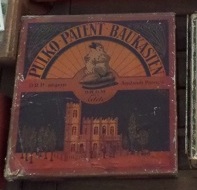 Image courtesy Barend Westerveld |
||||
BOUW MEE This system, which is a cross between Mobaco and ELBA, was produced by Albouw in Baarn, The Netherlands. They put out two Sets, A 1 and B 1. The manual mentions that they are in the process of expanding the range, but I don't think any other sets were ever made. 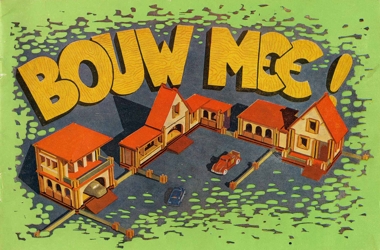
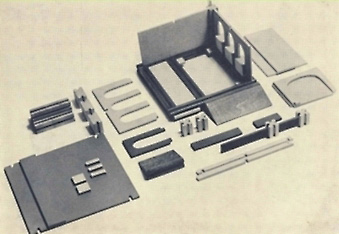 Images courtesy Rien ten Bos |
||||
BOUW MEE - SET A 1 The box is partitioned with an area for small parts. In addition to a Manual, there is a fold-out "architectural" drawing showing all the parts. |
||||
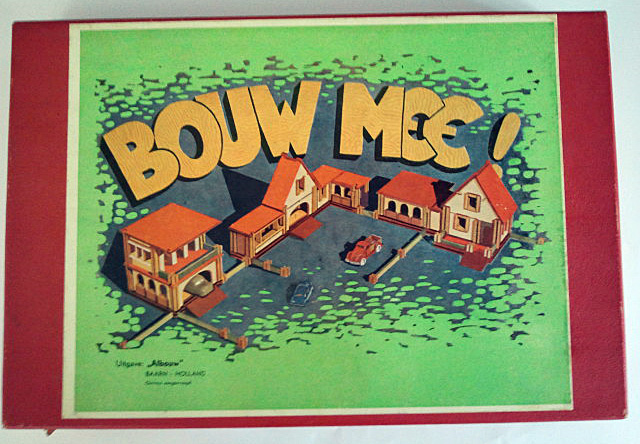 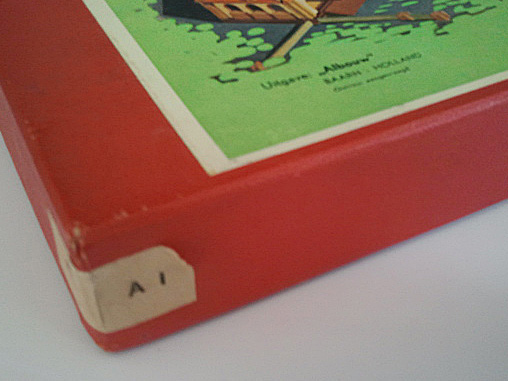 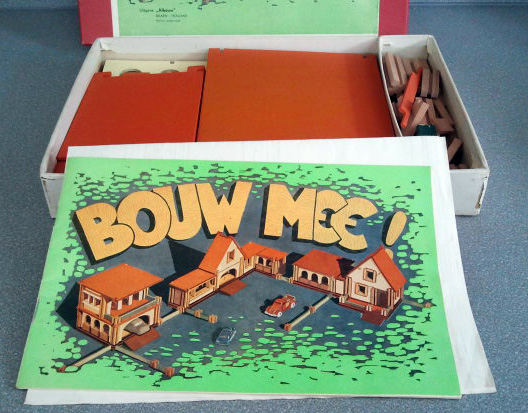 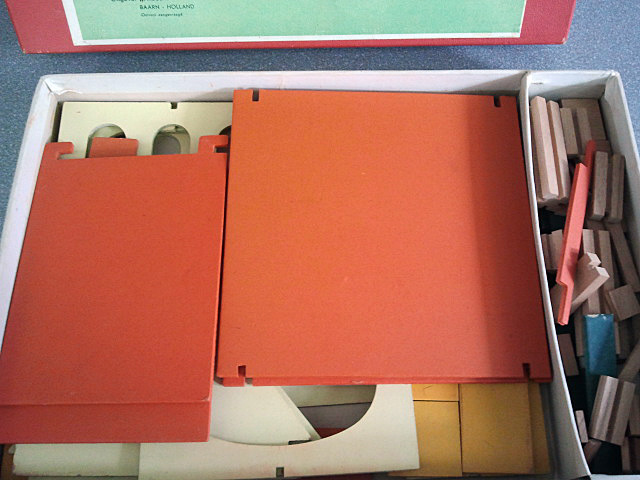 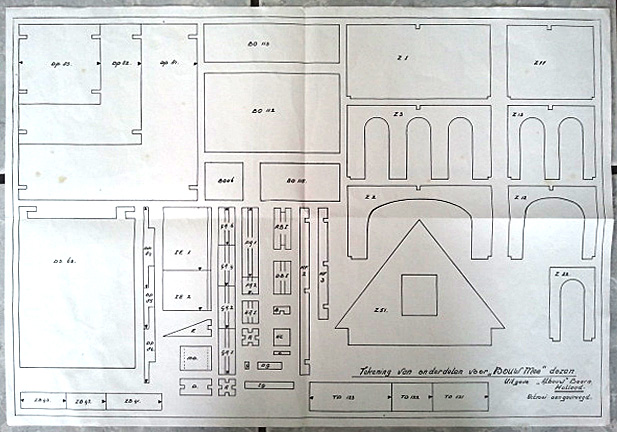 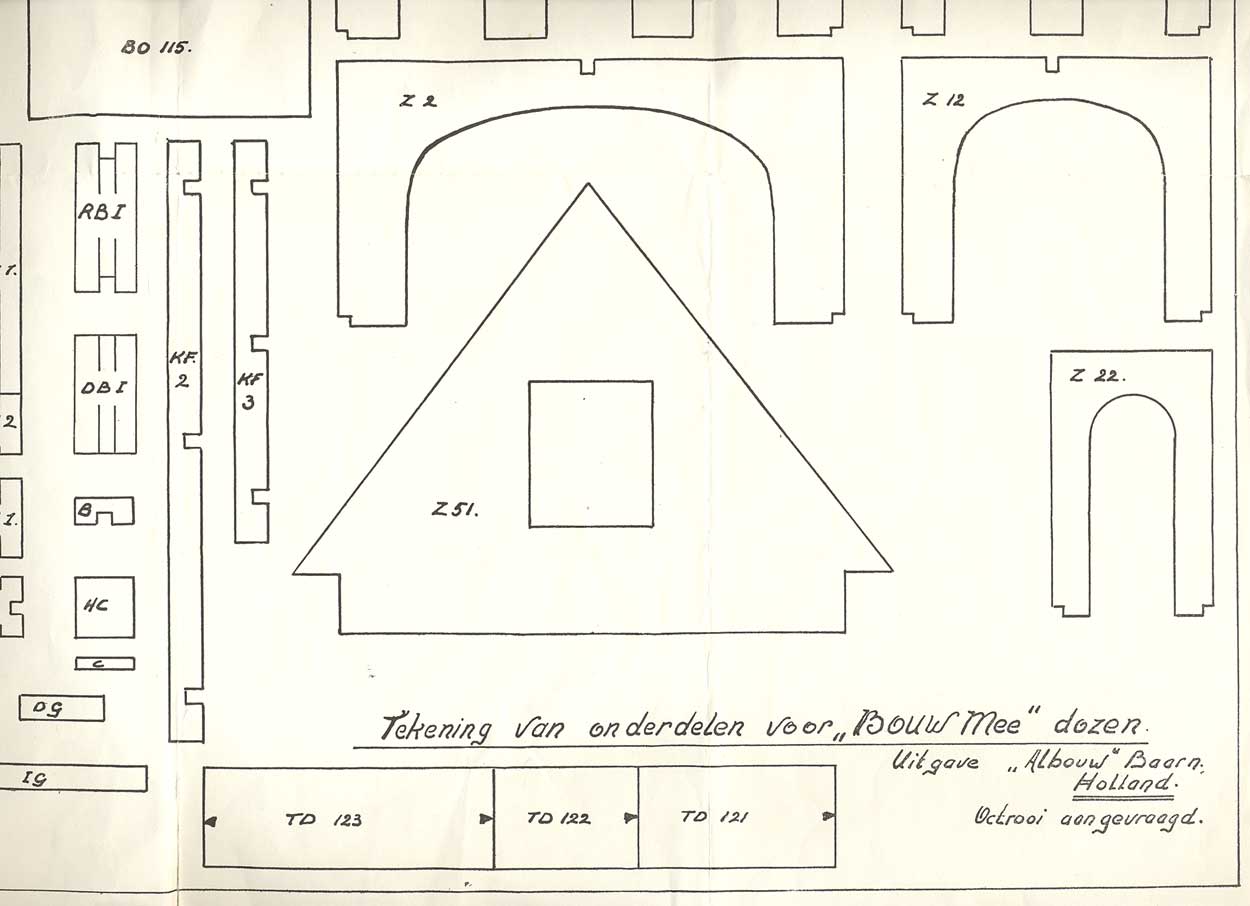 Photo's courtesy Leen Kalden Detail of parts drawing courtesy Rien ten Bos |
||||
BOUW MEE MANUAL This same manual was used in Set A 1 and Set B 1.  240 x 156 mm 20 pages (including covers) Front cover: 4-color Inside: black & white 14 designs See pages DOWNLOAD PDF |
||||
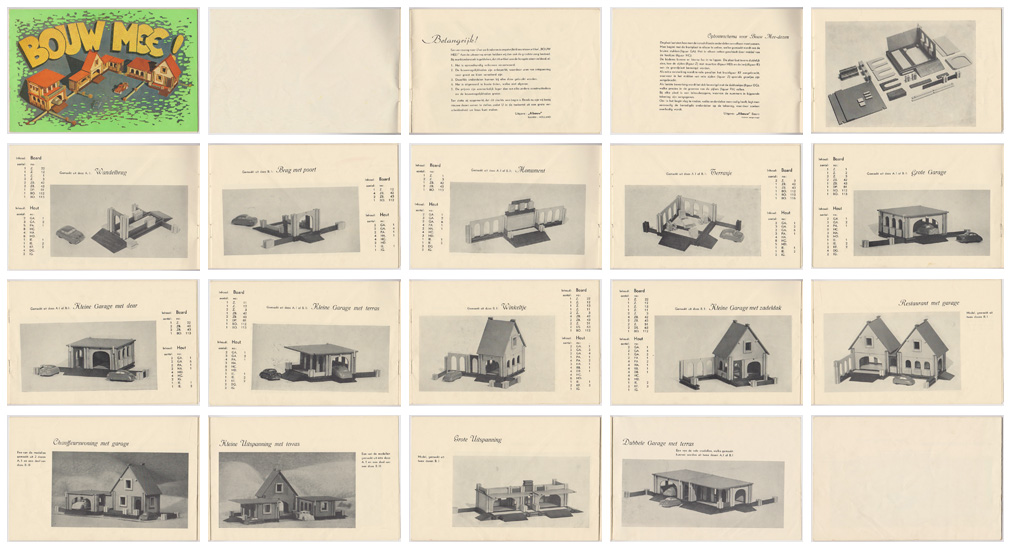 Images courtesy Leen Kalden |
||||
FABRO FABRO was a Mobaco look-alike made by Aeromodels in Liverpool, England. According to the Wakefield Council's Museum Collection Online, this system dates from around 1940. Below the manual for Set 0. I have no further information on this system. 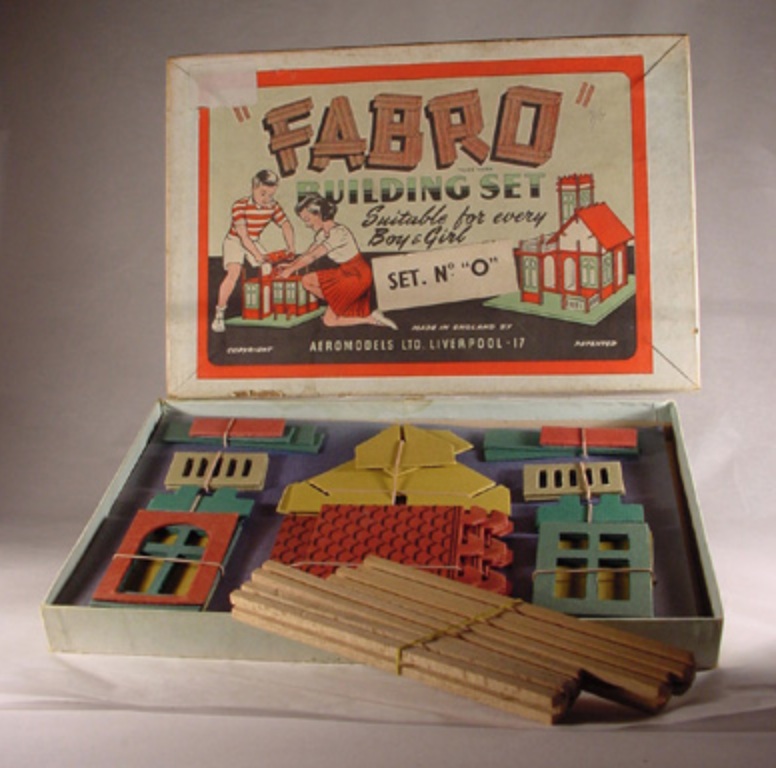 Image from Wakefield Council's Museum Collection Online |
||||
FABRO SET 0 MANUAL 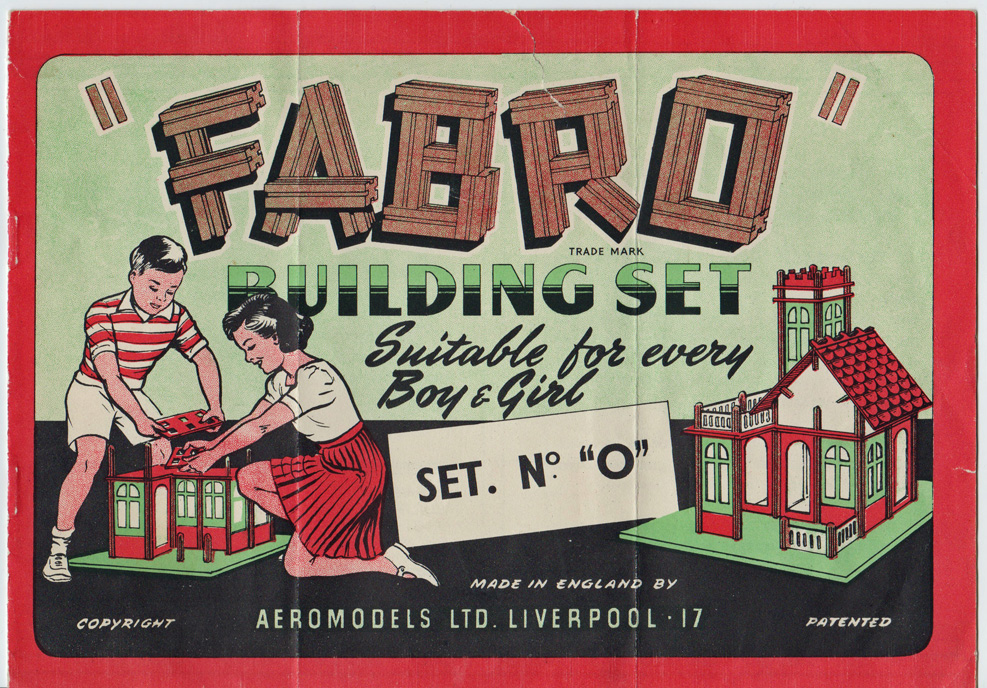 246 x 174 mm 8 pages (including covers) Cover: black, red, green Inside: black, red 6 designs See pages DOWNLOAD PDF |
||||
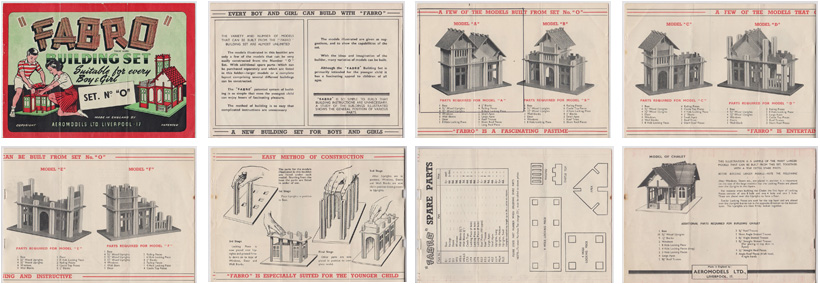 Images courtesy Leen Kalden |
||||
OKWA ZET-Z-OP BOUWDOOS VOOR KLEINE ARCHITECTEN (= OKWA Zet-Z-op construction set for small architects) OKWA stands for Okkerse Waddinxveen. Rien ten Bos writes that the Okkerse family established the factory in 1901. It was, to his knowledge, the first real wooden toy factory in the country. In the 1930's they started manufacturing play stores. In the 1950's they were big in doll houses. By the 1960's they were the largest toy manufacturer in the Netherlands, making a wide variety of wooden toys, board games and card games. Production ceased in the late 1970's. Their Mabaco-like system had pegs in the ends of the columns so you could stack the columns. The plates are plastic. The roof halves are held together by a longer square rod. A major difference with Mobaco is the lack of a ground plate. "Zet ze op" is a Dutch play on words which means both "go for it" and "put it on", a reference to their column system. So far, I have found images of one set (two versions) and Complementary Sets 1 and 3. HONGS (a now defunct website which had lots of information on Dutch toys) dates these sets as being from ±1970. |
||||
OKWA ZET-Z-OP SET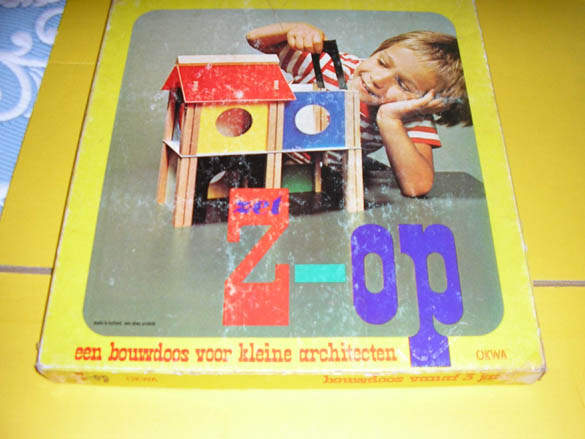 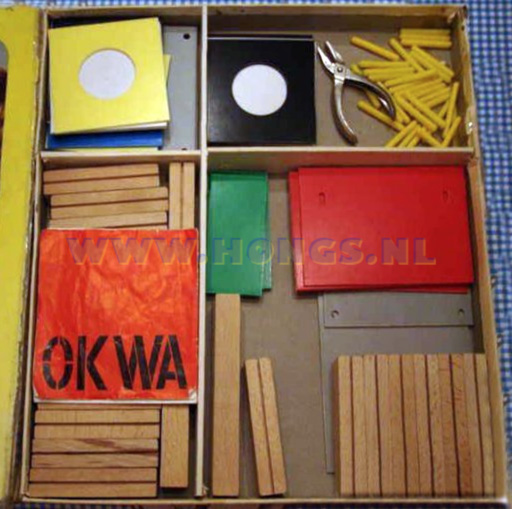 Image courtesy Rien ten Bos Image courtesy HONGS 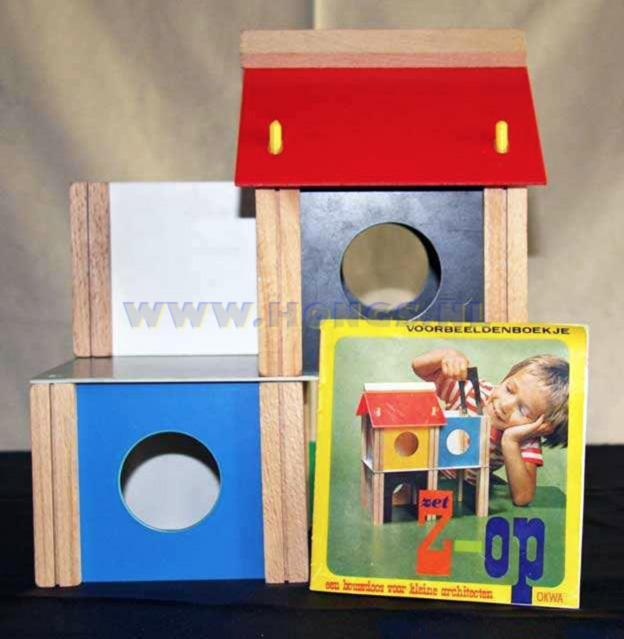 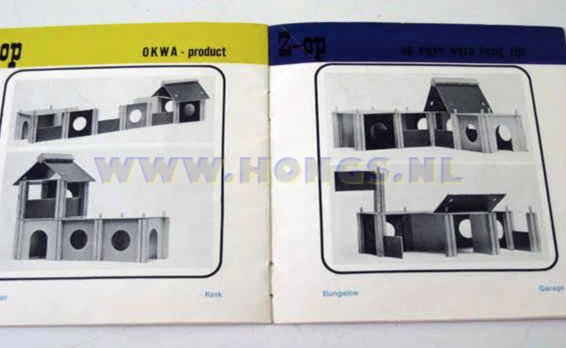 Image courtesy HONGS Image courtesy HONGS Here a (later?) version with a blue box, orange lining and orange inserts inside the box and a bright green band in the instructions manual. The building on the right is euphemistically called "Villa with garden"! 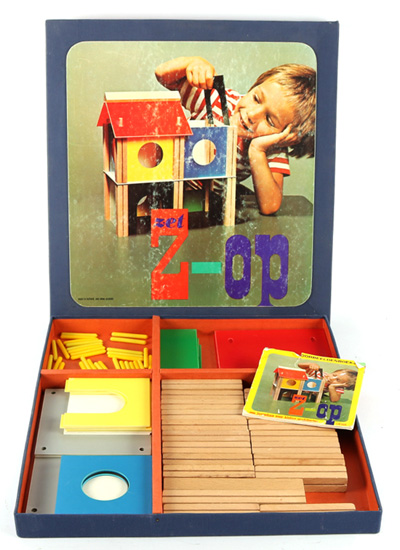
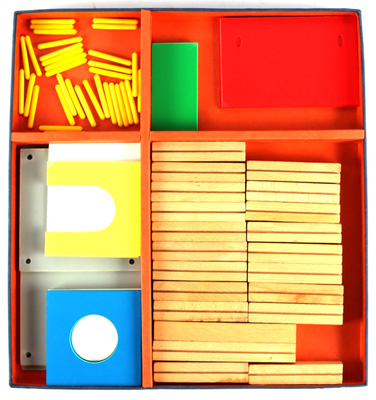
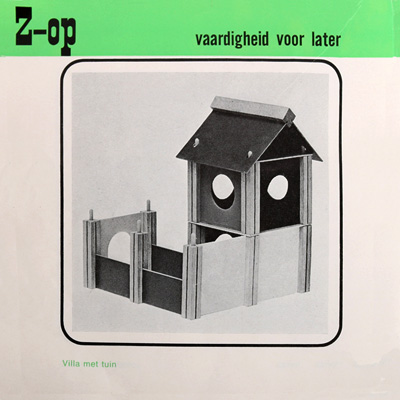 Images courtesy of Koos Welling, from parelsbreda.nl |
||||
OKWA ZET-Z-OP COMPLEMENTARY SET 1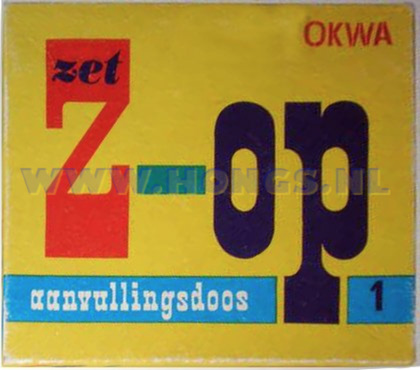 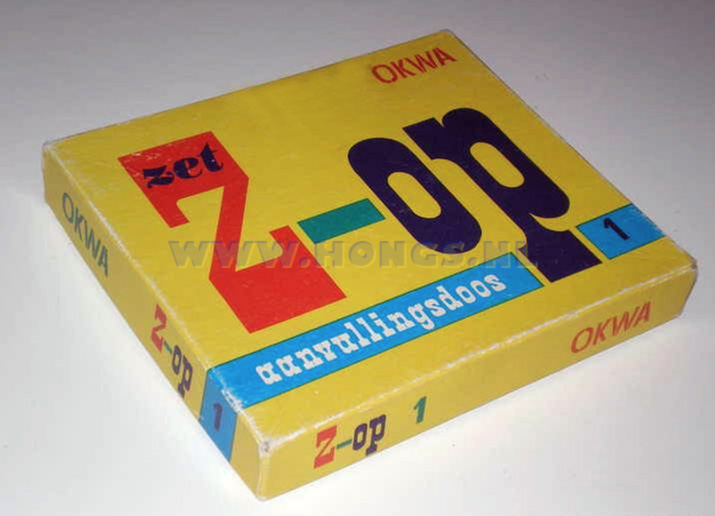 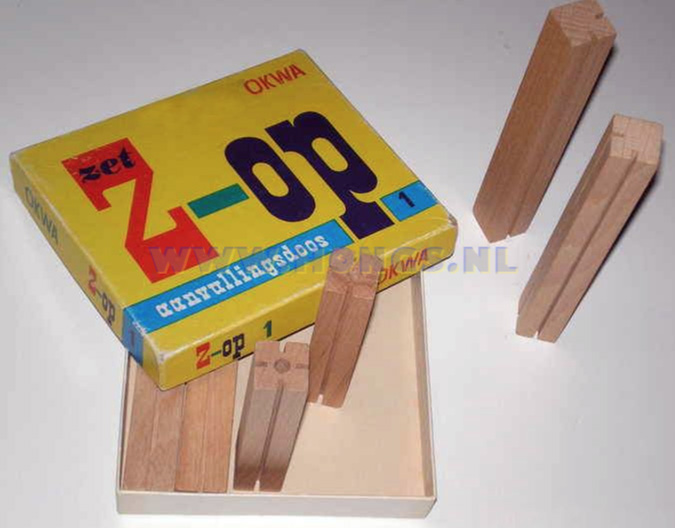 Images courtesy HONGS OKWA ZET-Z-OP COMPLEMENTARY SET 3 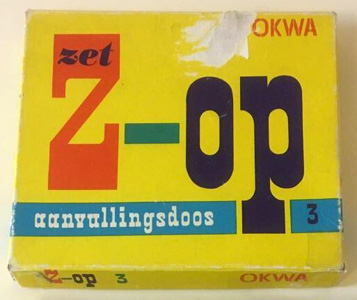 Image courtesy Koos Welling, from smullenvanspullen.nl |
||||
WILFRIED - DER KLEINE BAUMEISTER Wilfried sets were manufactured by Heller & Co (HECO) in Wutha [Farnroda] near Eisenach, in the former East Germany, 200 km north-east of Frankfurt. It is a straight copy of Mobaco. The drawings are identical to the 1931 Gnomes manual. From the description it appears there were two sets, No. 1 and No. 2, and the manual below was for both. Models shown in the booklet are the same as in Mobaco Sets 00 and 0, specifically models 002-005 from Set 00 and Models 01-04 from Set 0. Inside the cover is this text (in German): Wilfried's Heco construction kit, the ingenious toy for boys and girls.On the back cover it states "legally protected ("gesetzlich geschützt"). The Printer was Grafischer Betrieb Carl Kaestner in Eisenach, which relocated to Steinau an der Straße in 1960. Dating is uncertain, but must be somewhere between 1931 and 1960. I don't have pictures of the set and couldn't find anything more about it on the internet. |
||||
WILFRIED MANUAL FOR SETS 1 AND 2 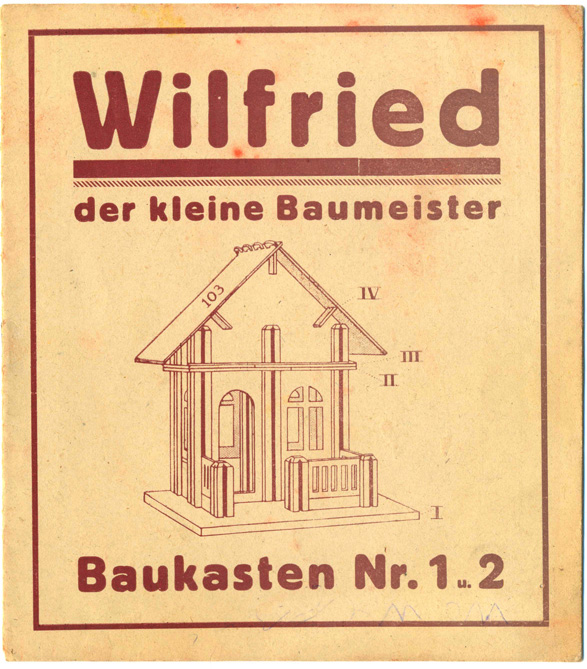 147 x 167 mm 8 pages (including covers) Printing: B&W (dark brown ink) 8 designs See pages DOWNLOAD PDF |
||||
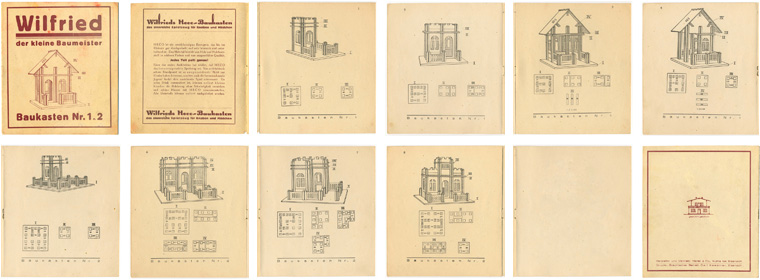 Scans courtesy Leen Kalden |
||||
CORUS WOOD-METAL CONSTRUCTION SYSTEM I saw this system on Marktplaats.nl (used stuff). The seller said it consists of metal plates and wooden columns. I had no idea what it was, but thanks to Tony Knowles I now know it's a French system call Corus, which was introduced around 1924, the same time that Mobaco was introduced. For lots more info on Corus, please download Tony's excellent overview. Tony maintains the Other Systems Newsletter with many fun toys to peruse. |
||||
|
||||
PLAY STRUCTURE I'm not sure where I found these pictures of a play structure that uses Maboco-like columns. 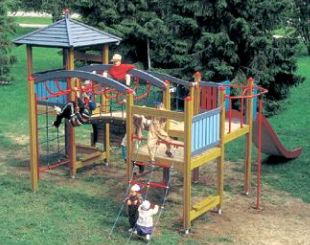 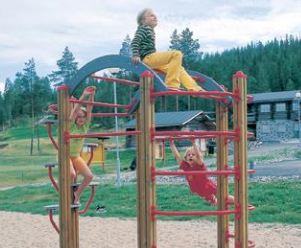 |
||||
MINIPLEX In the early 2000's, MiniPLEX, a small Dutch company in Ede, started producing an all-wood laser-cut version of Mobaco. They made a complete Mobaco set named Ridderhof, which came with a birch chest, instructions, and more than 200 parts. Unfortunately, it is no longer produced. |
||||
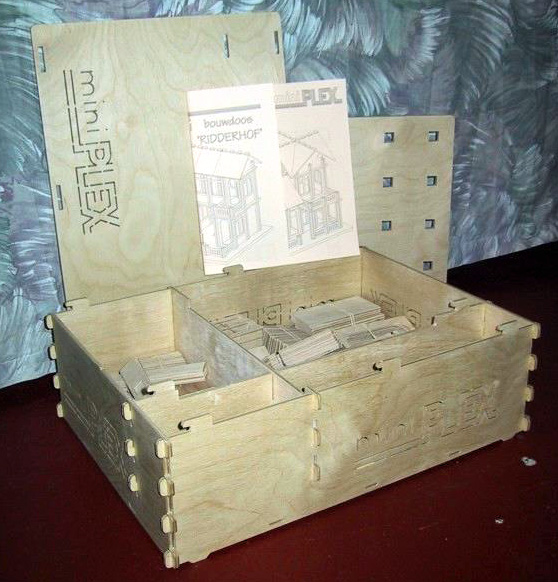 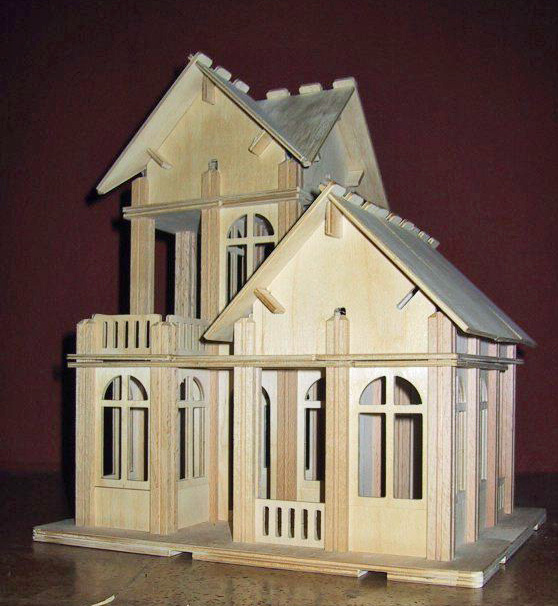 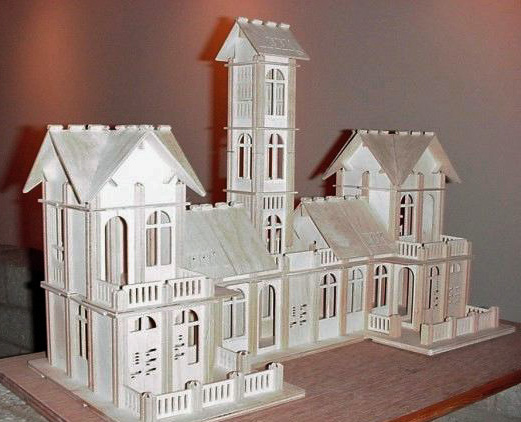 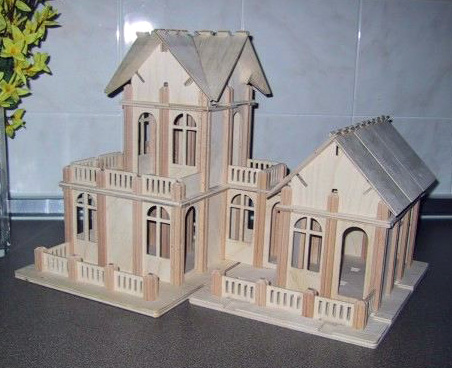 Images courtesy of MiniPLEX |
||||
RABIUS DESIGN Mobaco has entered the digital age! Niels Rabius of Rabius Design in Delft created a 3D-CAD library of Mobaco. With it, any size "model" can be virtually built, there are no limits to the number of parts! |
||||
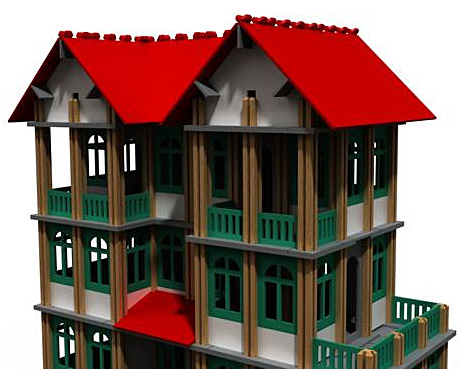 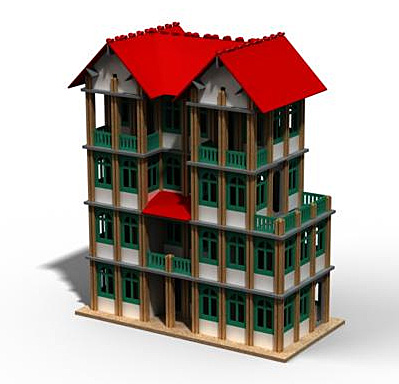 Images courtesy of Rabius Design |
||||
ARCKIT  Image courtesy of Arckit Arckit is a new construction system from Ireland, introduced in 2014. Although different in conception, Arckit also makes buildings. But much more refined than Mobaco. An important similarity with Mobaco is that you build with modularized elements that are a single story high. The scale of Arckit models is 1:48, and is based on a 1.2 m square grid. So each module is 25 mm wide, compared to 2-1/4" = ± 57 mm for Mobaco. This would make Mobaco about 2.3x larger, except that the width-height ratio of the modules isn't the same, so an exact comparison is not possible. But on the whole, Mobaco is roughly twice the size. 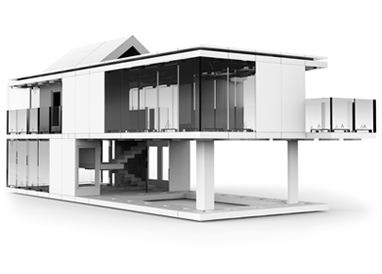  Images courtesy of Arckit A major difference is that Mobaco works with structure and infill (a concept further developed for real buildings by architect John Habraken in the 1960's), while Arckit elements are load bearing. Currently, Arckit has 26 components, with more to come: 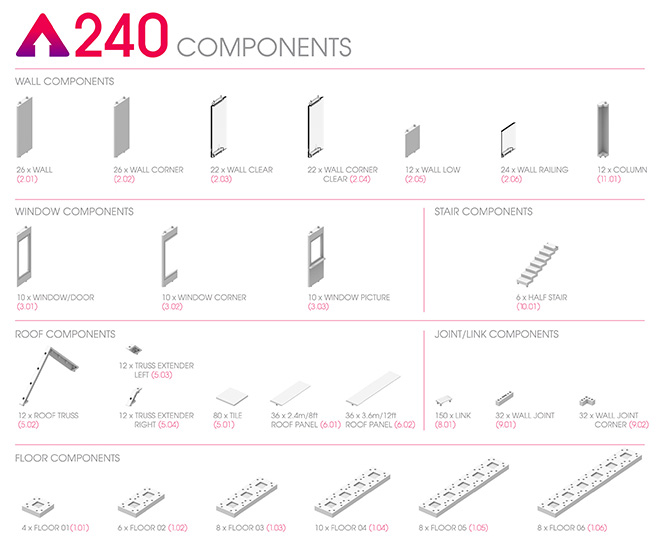 Image courtesy of Arckit Arckit also plans to release component files for 3D printing, so you can make special parts yourself on a (home) 3D printer. Also, using (free) SketchUp 3D software, you can build your own Arckit buildings after downloading Arckit components from the SketchUp library. As these pictures show, Arckit models are clearly "modern". In that sense, Arckit is a worthy 21st century successor to Mobaco! Kits can be purchased over the internet at www.arckit.com. Arckit Official Animation from ARCKIT on Vimeo. |
||||
ARTICLES AND BOOKLETS |
||||
8 NOVEMBER 1931 - ARTICLE IN NATUUR EN TECHNIEK DOWNLOAD PDF Scan courtesy Gerard Poort 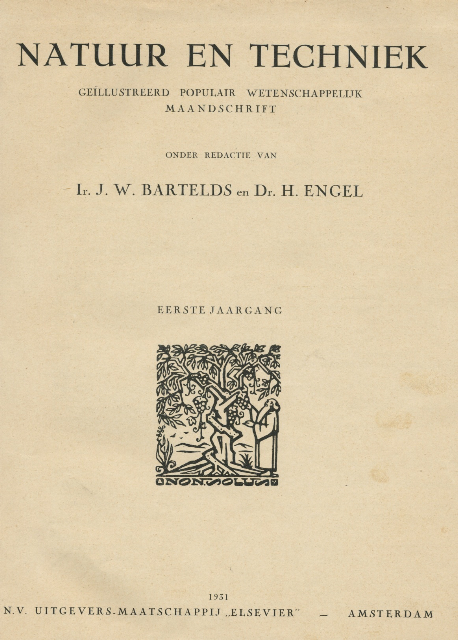
|
||||
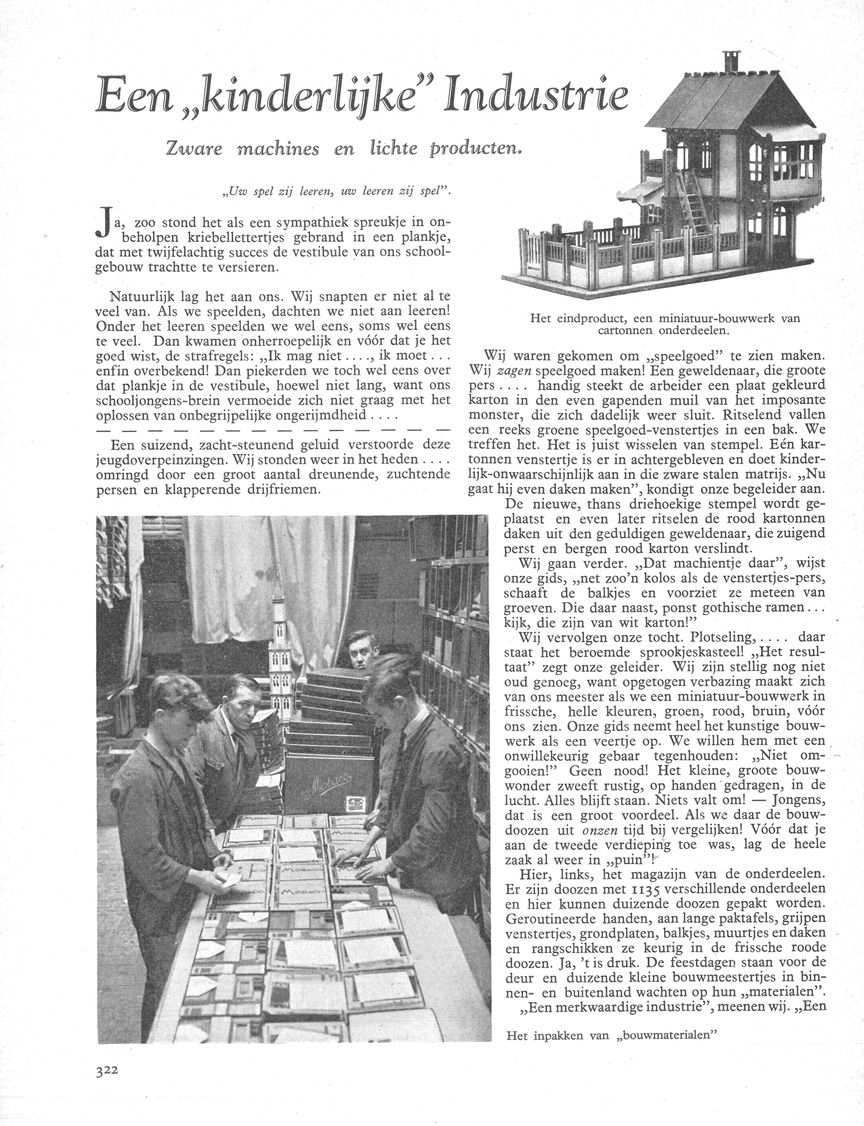 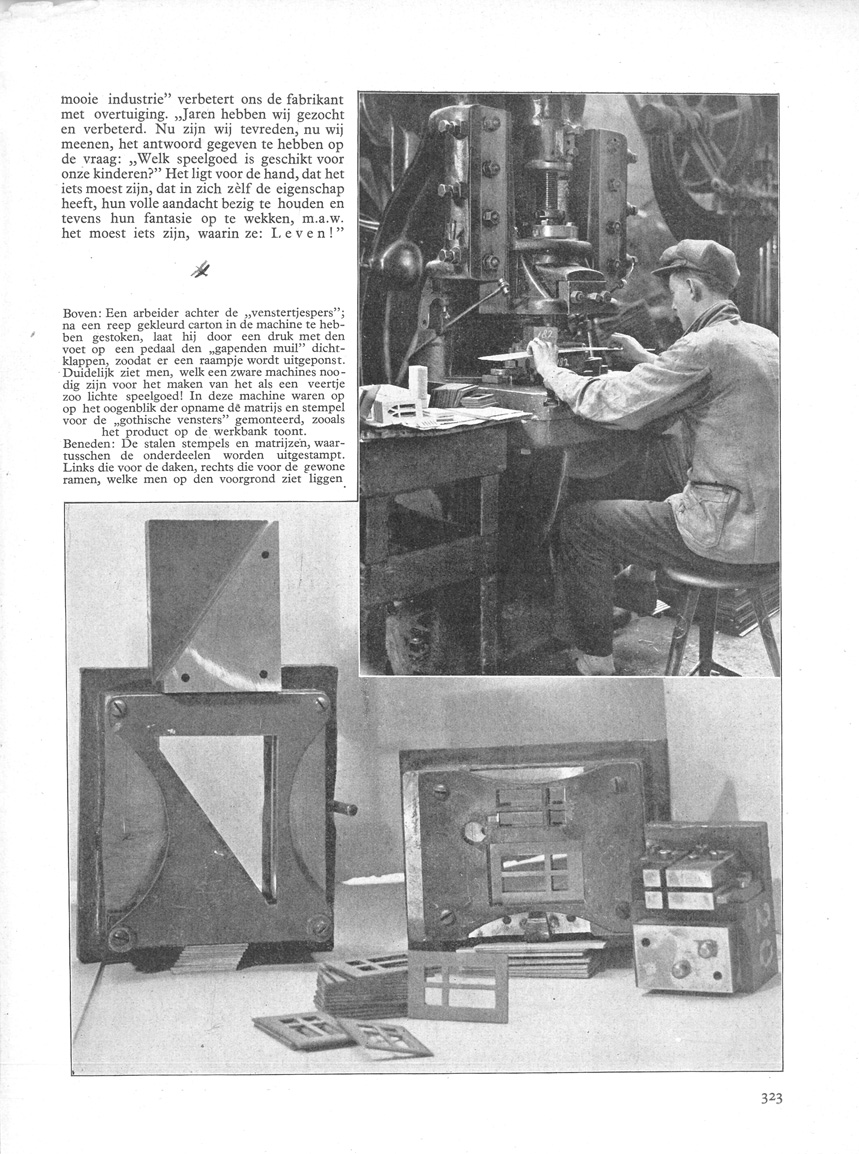 Scans courtesy Alex Geelhoed |
||||
HALBERTSMA BOOK (2008) T. M. Halbertsma put together a 70-page Mobaco book with history and images from various sources. All his material has been incorporated in this website. There are several versions of this book, this one being the most recent (as far as I know). 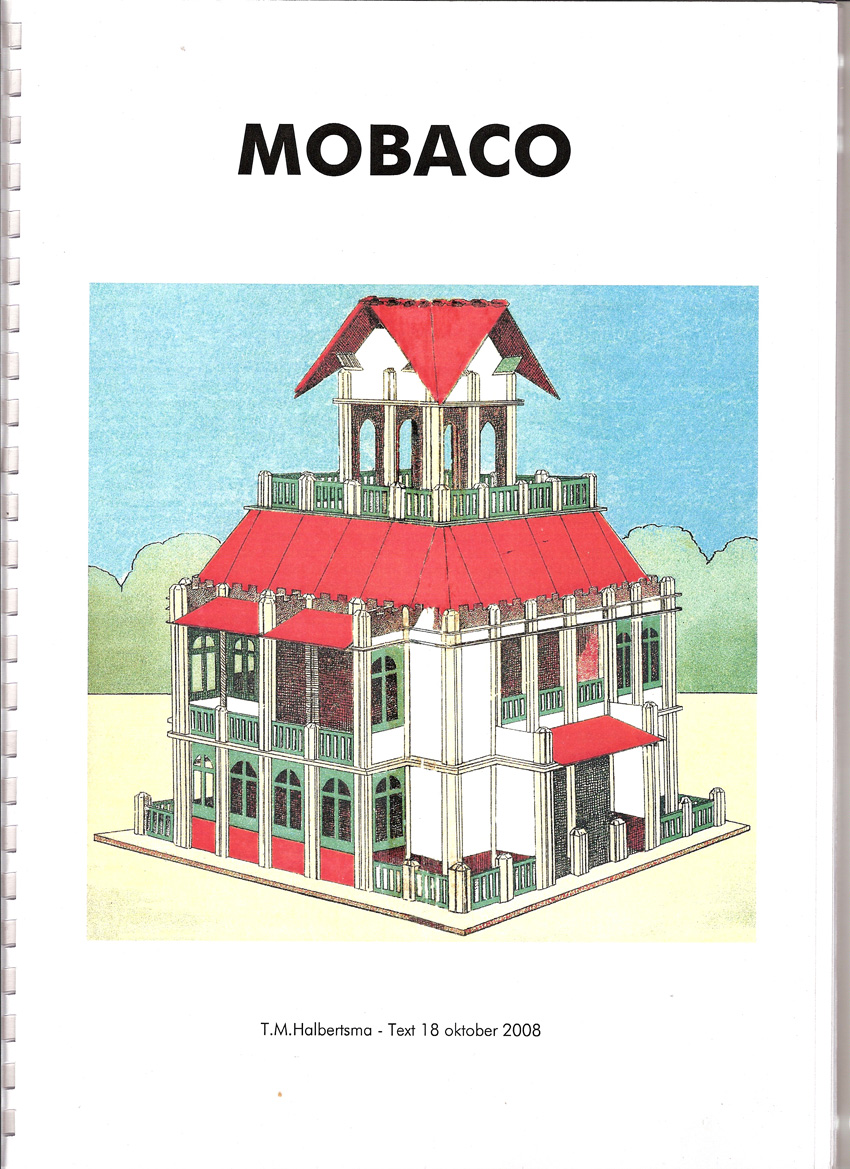 A4 size 70 pages (including covers) Color copies Text is in Dutch Text version 18 October 2008 See pages DOWNLOAD PDF (33 MB) |
||||
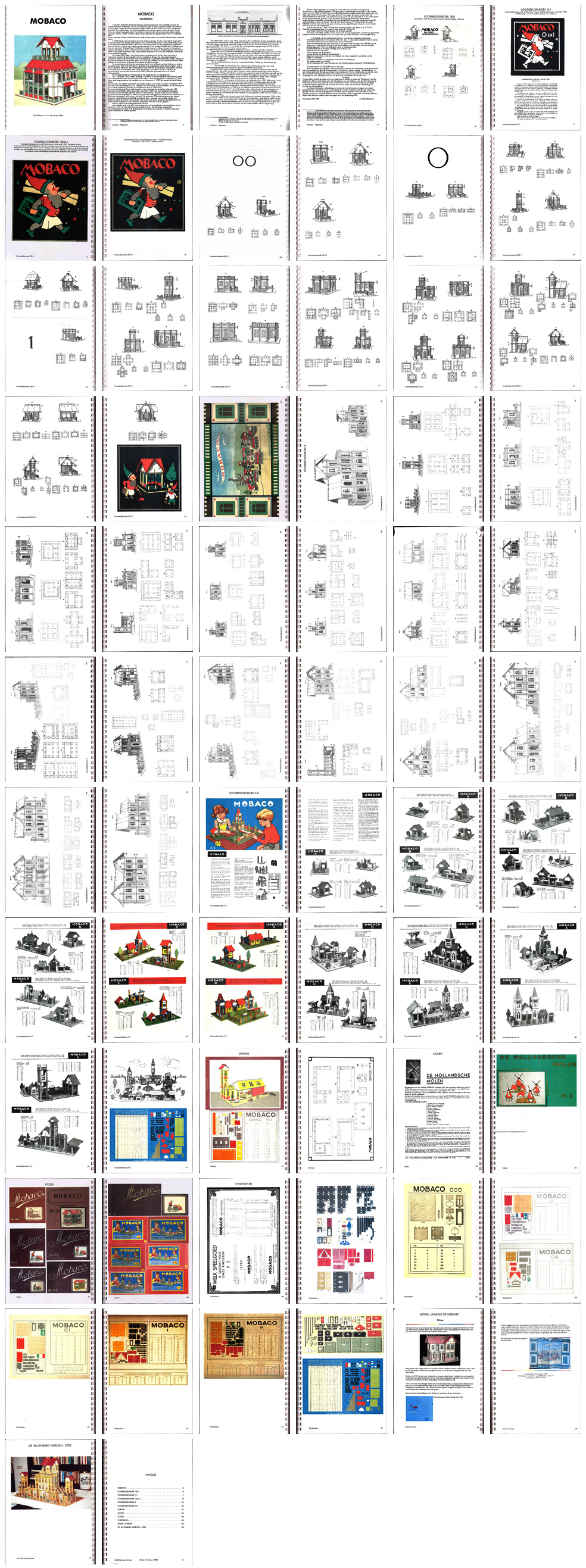 Scans courtesy of Henri de Graaf |
||||
JUNE-JULY 1990 - ARTICLE IN VERZAMELKRANT This article is about toy construction systems in general, but mostly about Mobaco and Anker. No new information. It's part of a series about toys on display at Museum Kinderwereld in Roden. DOWNLOAD PDF 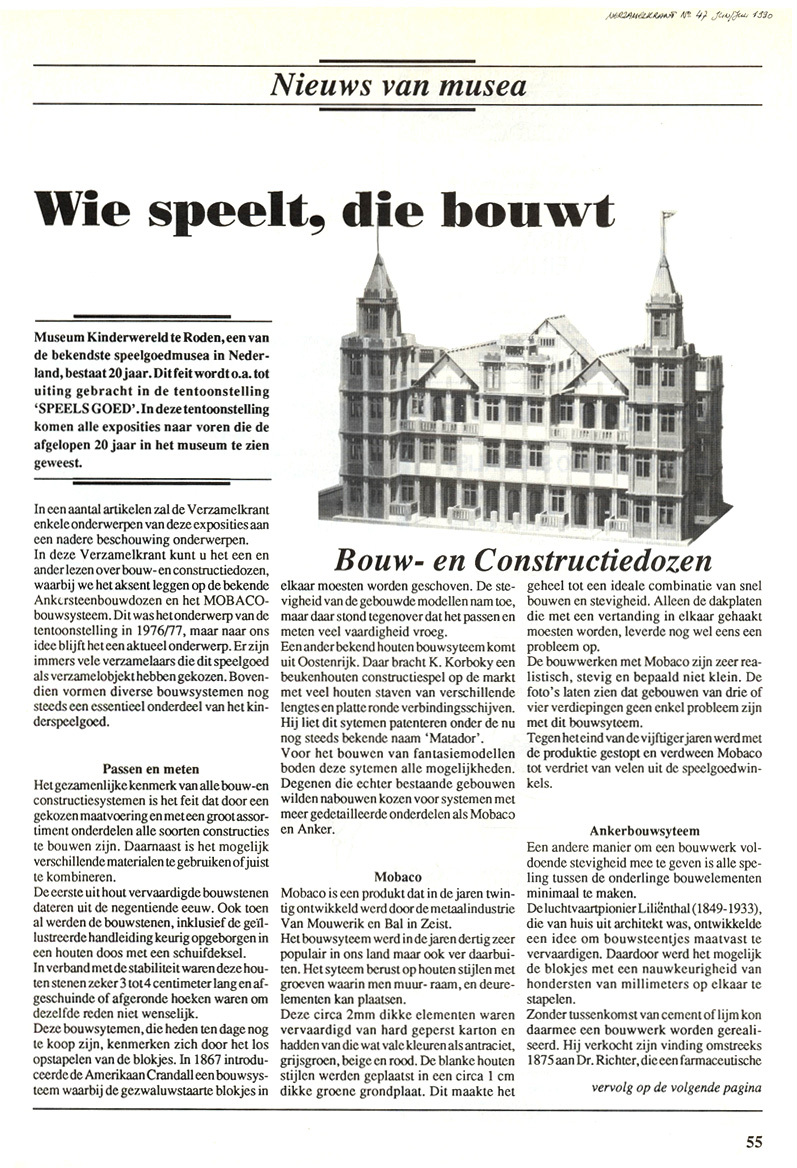 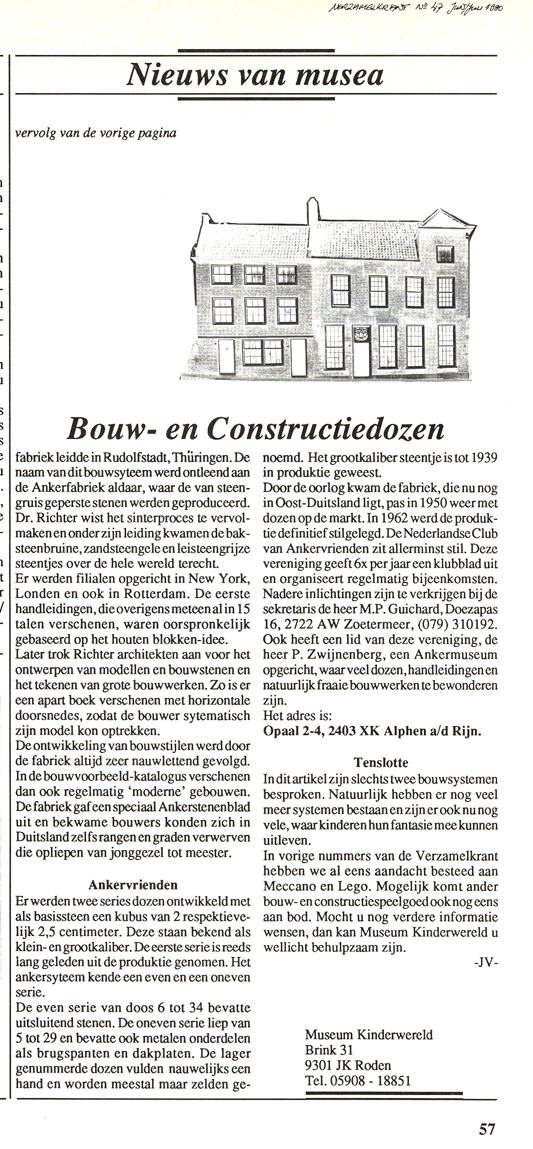 Scans courtesy Rien ten Bos |
||||
MARCH 1993 - ARTICLE IN VERZAMELKRANT This article is based on information provided by Nick Cranendonk. It gives a broad overview of the history of Mobaco, and asks collectors to contact him. In 1993, Cranendonk wrote the first issue of what was supposed to become a magazine for Mobaco collectors. Once I have his authorization, I will put that first (and only) issue on this website. DOWNLOAD PDF 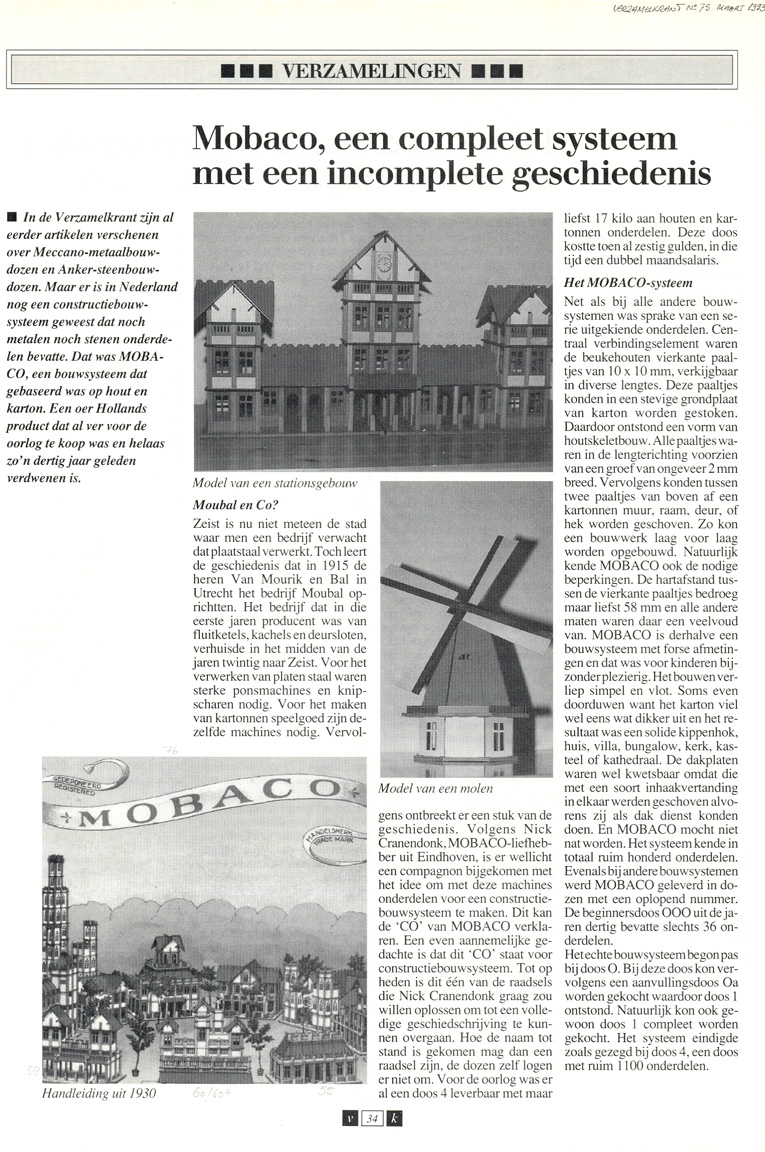 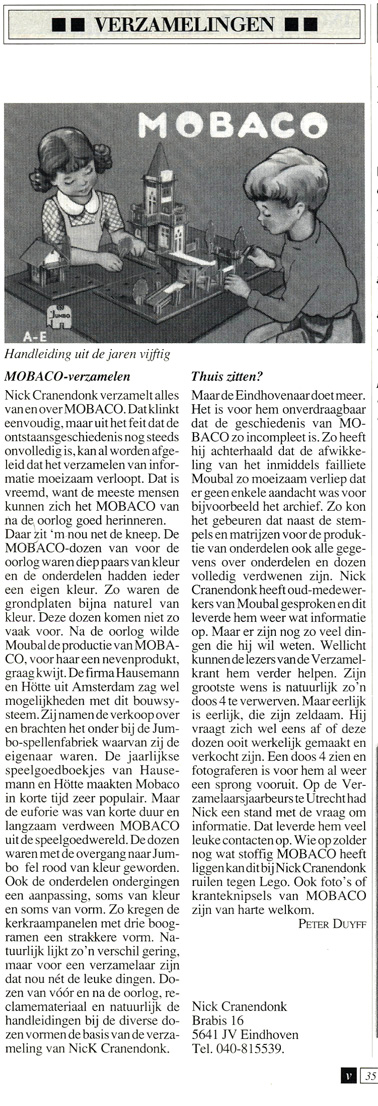 Scans courtesy of Rien ten Bos |
||||
JANUARY 2001 - ARTICLE IN MODEL COLLECTOR 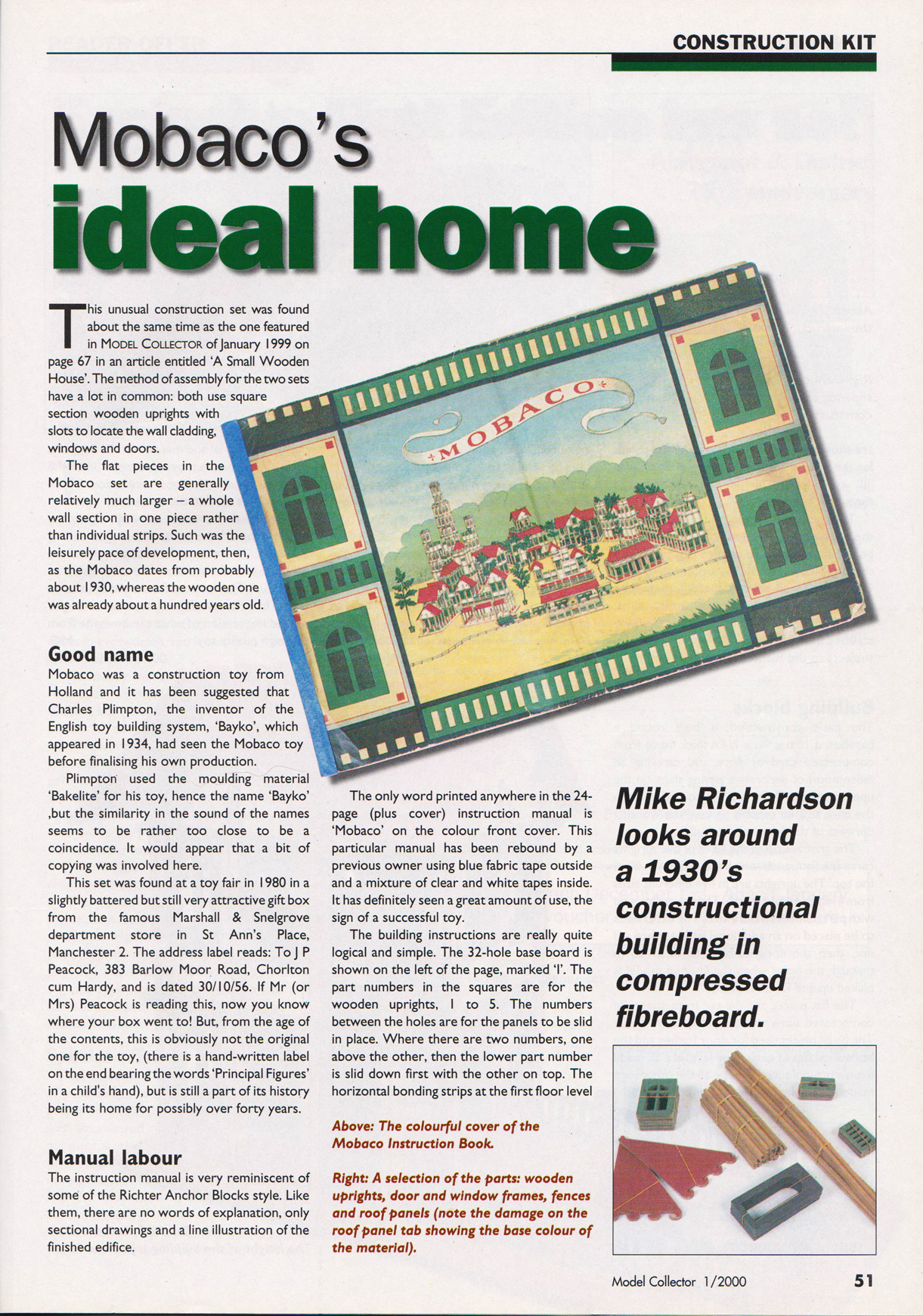 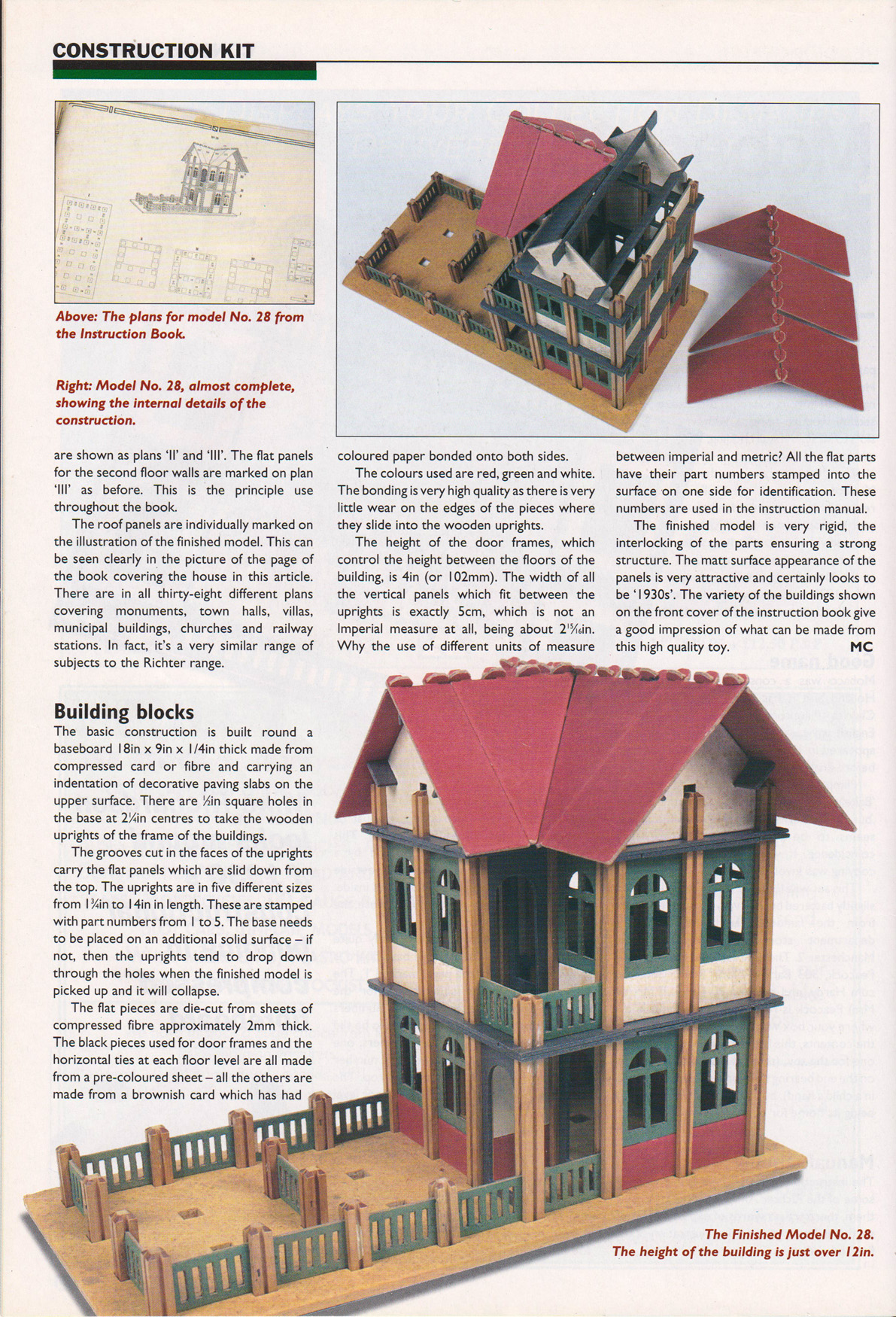 Scan courtesy Leen Kalden |
||||
MARCH 2011 - ARTICLE IN SPEELGOED EN HOBBY This article gives an overview of the history of Mobaco. Note a Spanish version of the Job de Nijs price list. 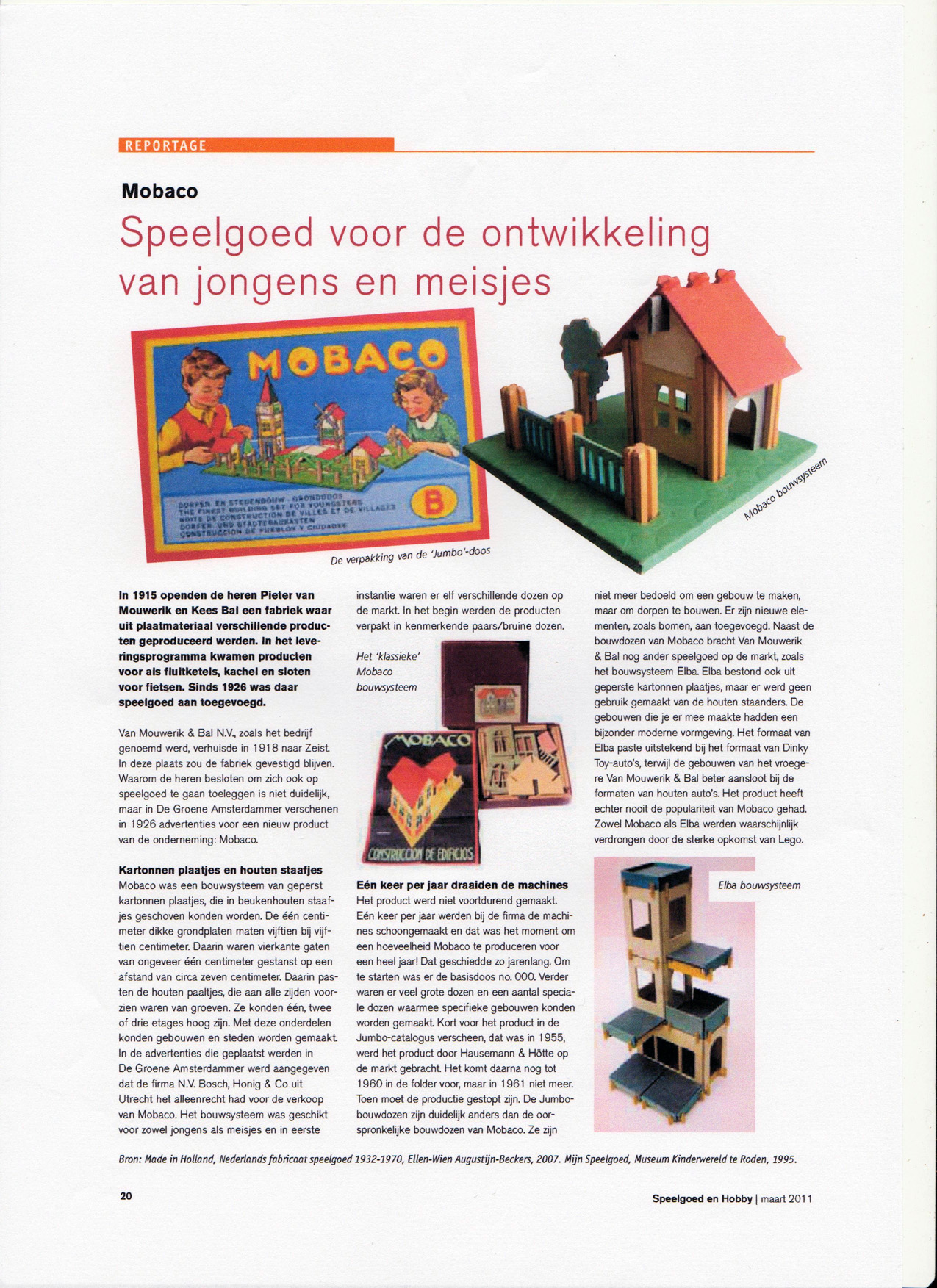 Scan courtesy Leen Kalden |
||||
LINKS |
||||
Museum Kinderwerld This Children's Museum in Roden (near Groningen) has a Mobaco display. Brighton Toy Museum They have a very rare Set 4! Set in a series of Victorian railway arches underneath Brighton Station, Brighton Toy and Model Museum is one of the world's key centres of excellence for the preservation and display of toys and models, focusing on the golden age of British toymaking from the first to the fifth decades of the Twentieth Century. Brighton is on Britain's south coast, about 62 miles / 85 km due south of London. Speelgoedmuseum Deventer This museum regularly holds events where you can actually build with Mobaco. Type Mobaco in the search bar to see when. It may also have some sets on display. HONGS HONGS, which stands for Historisch Overzicht Nederlandse GezelschapsSpellen (= Historical Overview of Dutch Games) was a collector's website maintained by Rob van der Linden. It had lots of information on Mobaco, much of which is on this website, and many, many other Dutch toys. Unfortunately, this great resource was taken offline in 2018. |
||||